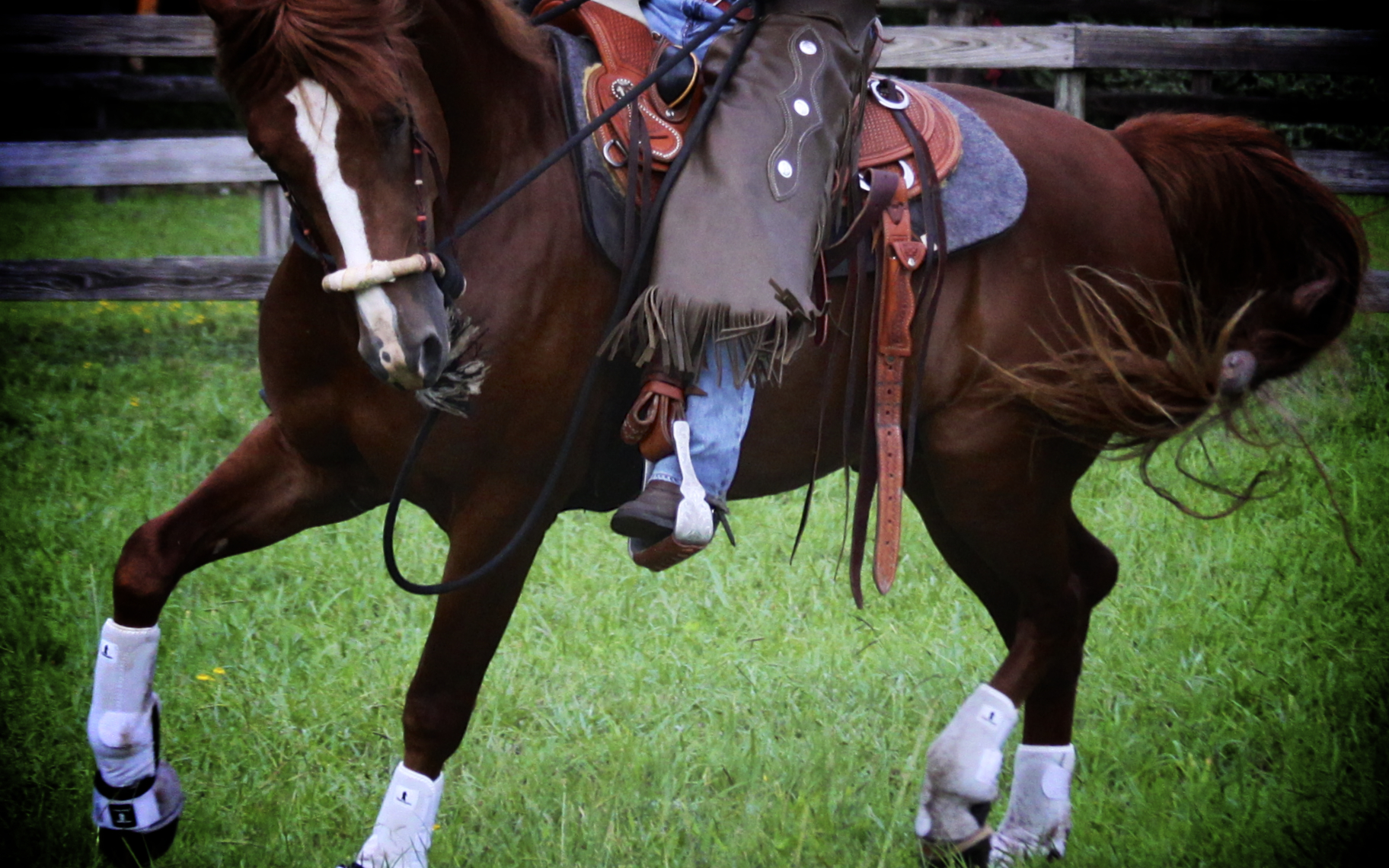Though the function of the ultimate manege horse and that of the ultimate stock horse differ, it is a general misconception that these two styles of equitation are mutually exclusive. ?The?polar extremes of American “Western” style riding and FEI/German-style “Dressage” riding, in fact, are both relatively new concepts in the long history of equitation.

This said, the Spanish-based Vaquero-style of stock horse or “Western” style training and legitimately?classical high school dressage – manege, really – ?are far from the?polar opposites most presume. ?In fact, they are modern offshoots?of the same?old tree, its origins?rooted in Iberia (Portugal/Spain), where the apex?of fine horsemanship (and fine horses) was arguably first reached.
Long before the?American “cowboy”, there were Spanish-American vaqueros. ?Working livestock from horseback was cultural a heritage for?them, as this had been done in?Spain and Portugal since antiquity?as a result of their long traditions of bullfighting – itself a derivative of the populace-appeasing entertainments born in Rome.
Once in the New World, accommodating?the differences of terrain and livestock, a number of adaptations?were made to the gear and approaches to working stock. ?The most?obvious of these were?the additions of a roping horn to the stock saddle, and the reason for the horn: ?the stock rope. ?These are simply?adjuncts?to an old platform which had been in place in Europe for some time.
The “reined” horse – a.k.a. bridle horse – made?by the early Californios would have been trained in a manner little different than that used for horses destined for the royal manege, intended to carry nobles?nobly, and otherwise demonstrate finesse and controlled power from horseback. ?The finished versions of either specialty – manege or working – would have easily swapped tackle,?moved in the same frame, and responded to similar signaling paradigms or “aid” languages.
The same would be true today, were we to compare a dressage horse trained in the Romanic style (a manner which still survives in Spain, Portugal, and France, albeit quietly among connoisseurs unlikely to enter an FEI competition) with a bridle horse developed using the methods recorded by Ed Connell. ?(Sadly, neither the Romanic-based dressage horse, nor Ed Connell’s bridle horse, would fare well in today’s competitions, as the?standards have meandered some distance from their pragmatic, functional, utilitarian heritage).
Both the Manege and Bridle horse would have relatively upright neck carriage compared to modern competition variants seen in Reining and FEI Dressage.
In early training, both horse’s heads would have initially appeared?more horizontal than vertical, as the priority is teaching the horse a new balance, and developing a musculature to accommodate it. ?Depending on the physical qualities of a particular animal, the more or less “vertical” facial placement associated with the finished horse comes naturally once adequate muscling develops?in the withers and neck, and as the horse’s mounted center of gravity migrates?from the front to the center over the course of training. ?The ideal finished placement is called the “Spanish Arch” on the bridle horse, and?the ramener of the manege horse.
Initially, both horses would have been worked in a?hackamore-type device, essentially. ?In the case of the bridle horse, it would have been the hackamore literally; in the case of the manege horse, it would have been called a “cavesson,”?but understand, this is the?cavesson promoted by William Cavendish, 1st Duke of Newcastle – a device resembling a?bosal both in appearance and effect, and?not the “horse muzzle” associated with modern day “English” style riding tackle (another unfortunate misnomer, but I digress).
Subsequently, both horses would have completed a “two-rein” phase of training, wherein the curb is sensibly introduced as an addition to either the bosal or the cavesson – or, as a valid alternative in either school, the bridoon (a.k.a, snaffle). ?Eventually, graduating?horses would be?ridden with the single bridle hand (historically the left), using only the curb bit.
When finished, either horse would be offended to feel a posting trot, because neither would produce a trot that needed posting?to remain comfortable (nor would one have to look like a moron forcing themselves to sit a trot that simply cannot be sat with discretion!).?With their self carriage fully developed, the extended “campaign” trot becomes a remnant of early gymnastic training.
The similarities of the two products?- the original high school “dressage” horse and the original?American stock horse – underscore the fact that equestrian truth comes in just one flavor: ?The Truthy One.

